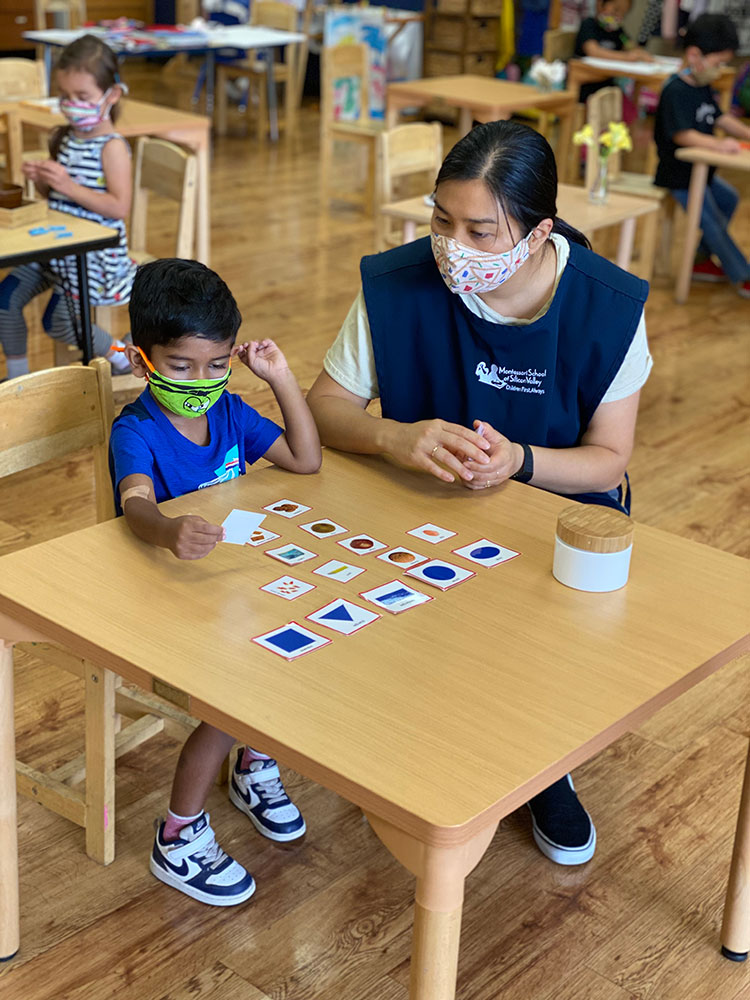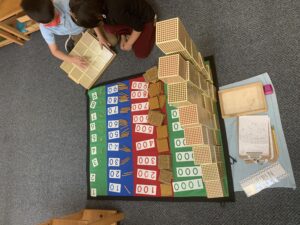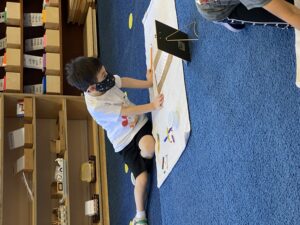
“To aide life. That is the basic task of the educator”
Dr. Maria Montessori, The Absorbent Mind
The Montessori Guide
Montessori philosophy is based on the premise that children have an innate ability to learn. When supported by an appropriate environment prepared by a trained Guide, children are enabled to reach their full potential.
Each Montessori classroom typically has one trained Guide supported by an Assistant. The Montessori teacher education training is broken into age groups; 0-3, 3-6, 6-9 and 9-12 years old. The training for each age group takes one to two years of full-time coursework to allow the Montessori Guide to develop a deep understanding of the Montessori philosophy which is an approach to the child, the environment, and the materials. In a working Montessori classroom, there is a “buzz or hum” of the children’s voices of which the Guide’s voice will never be louder.
Why “Guide” and not “Teacher”
The Montessori Guide prepares the environment and offers it to the children. With this model, it is not the adults who are the teachers, but the children. They learn to teach themselves and other members of the classroom community. This builds confidence, concentration, and a love of learning.
The Guide provides a link between the children and the prepared environment. The role of the Guide is unique, they do much more than “Teach”. Montessori Guides do not stand in front of the room reciting facts to the group of children. With young children, teaching this way is very abstract and typically not very effective. They do not actually learn concepts; they begin to memorize sounds and words (i.e. rote learning) much like the way one learns the words to a song. Just because a child can recite numbers “1 to 10” does not mean they understand the concept of the number “7” for example.
Instead, through observation, the Guide learns which materials a child is ready for. The Guide then presents the material allowing children to always be challenged. The children can learn at their pace and at their own level. Using the example of learning linear counting, 1-10, there are several materials on the shelf for the child to practice, thus learning the concept of “7”.
Helping Children to Discover their own Strengths
Since Montessori Guides typically stay with children for multiple years, they form a connection with the children in their classroom environment. They have a strong understanding of each child’s strengths and weaknesses. This allows them to create an ongoing lesson plan for each child. At MSOSV, the online lesson planning and record keeping allow the Guide to personalize each child’s learning path.
The lesson is brief and presented individually or to a small group. Rather than the Guide telling the child what to do, she will make the presentation and then step back. If the child has a question, the guild might ask them how they would solve the problem. This allows the child to develop critical thinking skills and creativity.
The Guide as a Role Model
Children mimic the behavior of their older peers and the adults in their lives. The Montessori Guide understands this role. The Montessori Guide will:

In this 5-part blog series, we started out talking about our new beginning, kicking off 2021 as we continue to navigate through the Covid-19 pandemic. How MSOSV has been able to offer safe care and ahead of the curve.
With the adjustments in the new year, MSOSV returned to full implementation of Montessori education for the children. We adjusted the classroom daily schedules to reflect the traditional 2 ½ hour work period and talked about how the “Play is the work of the child”.
This led into a deeper understanding of the Montessori Work Cycle and the importance of Community in the Montessori classroom. Finally, we wrapped up with this blog talking about the Role of the Montessori Guide.
I hope you found this series helpful and have a new and appreciated view into our beautiful classrooms.
Colleen